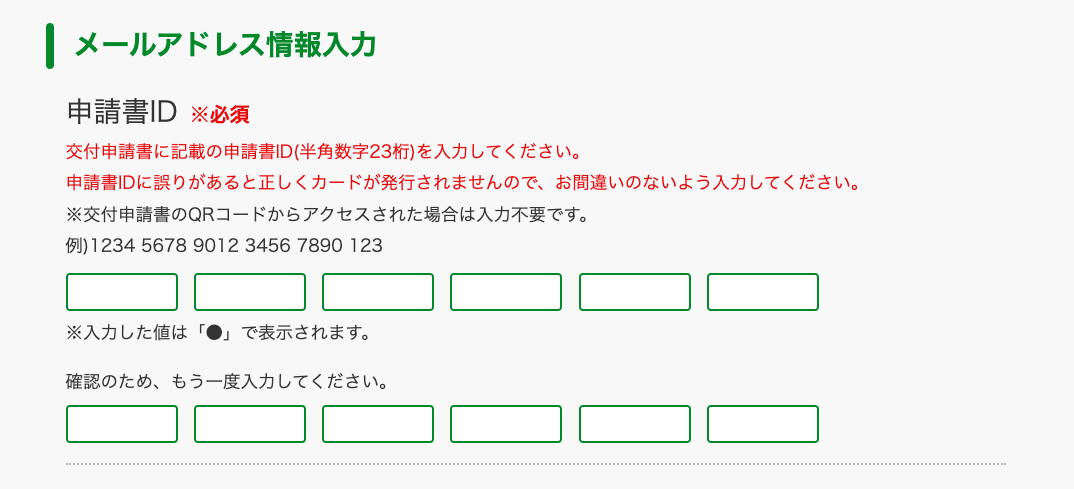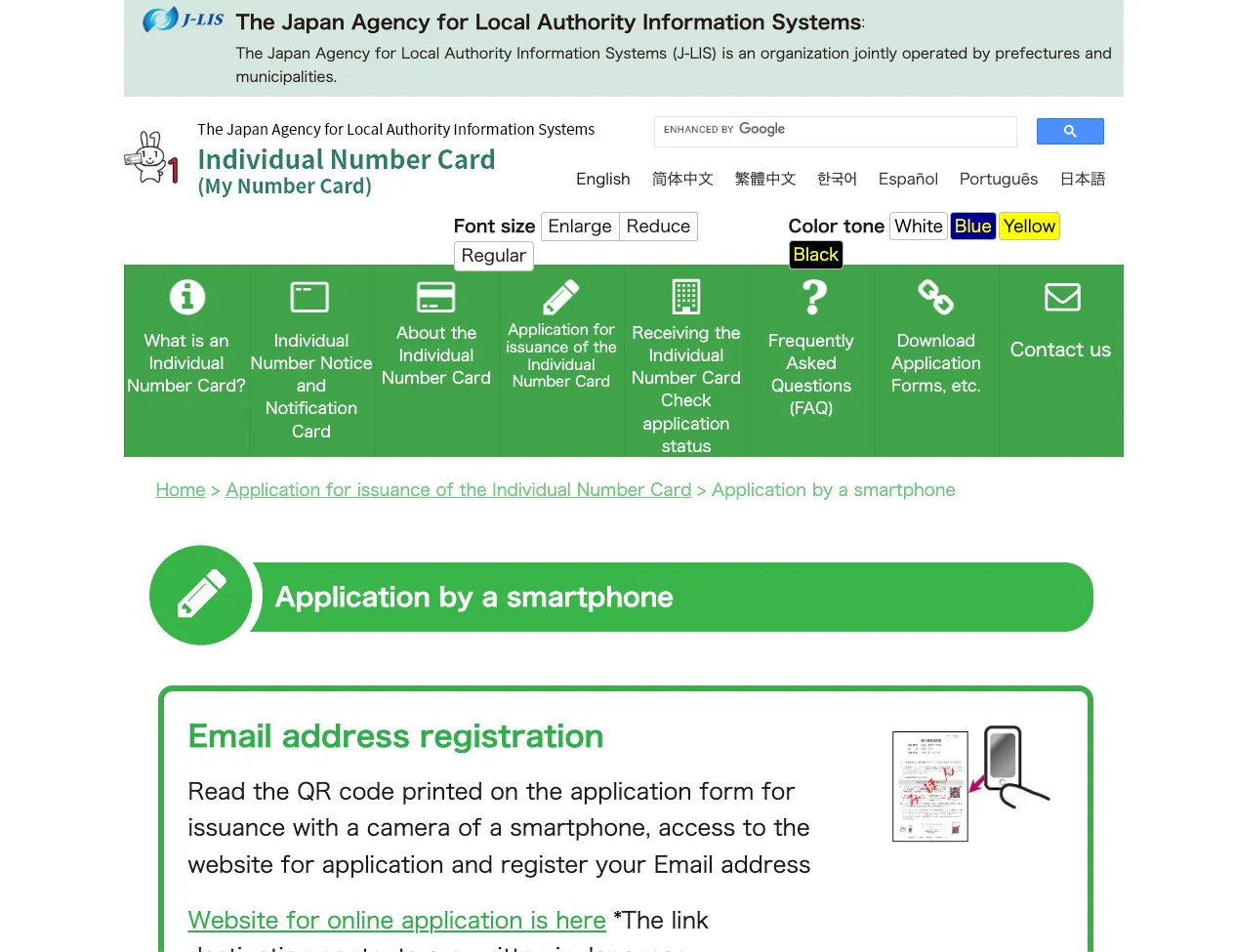Amongst other things, Japan is known as a sort of technological hubscape, no stranger to importing foreign innovation and somehow elevating it to the next level. From work methodologies, impressive manufacturing strategies, gaming experiences to bubble tea and pistachios ( sometimes both, together!), nothing is beyond a little bit of extra oomph catering to Japanese sensibilities.
So… why is their digital infrastructure such an abominable wasteland? Moreover, what does this say about Japanese sensibilities when it comes to digital experiences?

Full disclosure, this is not a dissertation on the the failings of Japanese digital infrastructure, but an anecdotal discourse on the seemingly deep-rooted, archaic practice of “build and they will come”; a passive, detached format that continues to treat its users more like sheep and less like thinking beings.
MyNumber, an important step toward bringing statecraft into the 21st century.
Social institutions will no longer be able to sustain itself, as witnessed by the dissolution of hamlets and towns, many which already stand abandoned and desolate.
It’s no secret that the storm brewing under the rapidly declining population problem is set to hit Japan in a few decades. In the next 50 years, Japan’s population is set to dwindle to a mere 87 million from 130 million that was polled in 2020. Everyone is aware of it, but numerous pleas from the government seems to change little in peoples hearts to somehow find themselves a partner and produce offspring. Perhaps it might be the hardline politico-economic stance on the issue, rather than a humanist approach to socio-cultural reform but that’s another story for another day.
‘So what?’ you say? Isn’t population decline a good thing?
Not entirely. Capitalism measures a country’s worth based on their exports and production capacity and by 2050, the number of jobs will far outpace the number of people working. Social institutions will no longer be able to sustain itself, as witnessed by the dissolution of hamlets and towns, many which already stand abandoned and desolate. Demographic problems aside, socio-political problems such as a crippling gender inequality (Japan ranks 120 out of 156 countries on the Global Gender Gap Index!), seniority based hierarchies as well as a sluggish economy and a deep resistance to change systems that the majority aging population has already acclimatized to (and disproportionately benefit from), are rapidly snowballing into a giant avalanche of chaos in almost all of their current governance structures.
While community uplifting and social wellbeing is a core tenet of Japanese lives, state institutions are not truly considered reliable source for stability or providence. A lot of pressure to sustain and implement communities lies within the hands of local municipalities and leaders. Nationwide, the political cynicism and apathy runs rampant amongst the youth, evident by a measly 34% young voter turn out, and the older generation seem uninterested in revolutionizing a system that has worked for them for several decades.
Long story short, fears that the straggling bureaucracy leaving Japan in the dust has finally come to the forefront of the collective consciousness. It’s obvious that Japan is on the precipice of big change but how prepared it will be for the fall into the Valley of Despair, is a matter of great debate and anxiety for all.
So what does MyNumber have anything to do with this?
In an attempt to begin addressing above issues they created the MyNumber system, or lovingly abbreviated “MyNa”, a (hopefully) streamlined and marked improvement from the paper-and-stamp riddled administrative pipeline. It claims to:
a. increase administrative efficiency
b. create better anti-fraud measures
c. improve public services.
MyNumber hit the streets in 2013 and resistance was surprisingly high for something that might seem like an obvious progression in statecraft technology. To date, it has managed to permeate the bare minimums of administrative procedures, the government even incentivizing public to get a MyNumber card for cash-value points.
Blows me away.
With all this resistance and lack of trust, one would assume they would have aspirations to onboard everyone onto the MyNa system akin to a state of the art Toyota EV, instead we got the Daihatsu Tanto — chunky, square and makes do.

A highly unpleasant journey to MyNa,
I can guarantee you User Testing does not exist and if it did, it most likely came in the form of surveys asking “would you use it? Y/N” or “tell us what we should do”
When I first immigrated to Canada in the year of our Lord 2000, the SIN card was one of the first pieces of identifying information that confirmed my status as a burgeoning Canadian. It allowed me to get a job and basically do anything that required any kind of administrative processing. I went into the town center, showed proof of identity and got it in the mail a few weeks later. In 2023, this process has been completely digitized.
Such was not the case at my arrival in Japan in 2015. I had a foreign resident card and that was all I needed for the two years I was here. MyNumber applications had rolled in by then, but by all means it seemed more like a perk than an imperative. You had to go in to your town hall and apply via a convoluted paper application with intensely dense kanji and opaque language that even native Japanese people struggle with.
Understanding it to be a perk rather than a critical aspect of future governmental operations, I skipped it entirely and really felt no difference in my day to day life as a foreign resident living in Japan.
Fast forward 2019, I return to Japan— this time for good and basically within the first six months of my arrival I receive a piece of paper in the mail, once again, in opaque Japanese (Google translate just couldn’t deal) informing me that I had been assigned a MyNumber. I say cool and toss the leaflet like a careless youngin only to realize that I made a grave mistake.
That paper was, in fact, not just informing me of the existence of MyNa, I had to bring said piece of paper to apply at the town hall, after which, it would take another month of processing to get the actual physical card in the mail.
I scrambled to find the paper work that had been sent to me and realized that it was too late. The paper was gone. Yet, I spent the next four years sans MyNa without any real impact on my day to day life, dillydallying due to varying parts outrage, apathy and laziness. 2023 rolls in and my financial institutions are now demanding MyNa identification in order to do any major financial work, including smartphone payment methods that have locked me out of my own bank account.
Therefore, I gird my loins and make my way onto the MyNumber website only to realize that they’ve made the shift to digital! How exciting!
Unfortunately, this delight is quickly hampered by the seemingly ingrained desire to want people to come into town halls.
That’s right. Now you can apply through an online form, but they fail to mention that there are prerequisites to applying for this form, one of which is a randomly generated application ID. Aka, that godawful piece of paper I threw out four years ago. Once this ID is lost, I must go into the actual town hall to get a new 16 digit ID for the sole purpose of allowing me to apply online.

The entire experience is riddled with poor discovery so people are left fuddling through some pretty important portions of the process, especially since they have been incentivizing it with cash value points (up to 20,000円!) The info dumping is on a whole other level and it seems repetitive messaging is their solution to problem solving any questions or concerns, which is basically what their FAQ does.
I can guarantee you User Testing does not exist and if it did, it most likely came in the form of surveys asking “would you use it? Y/N” or “tell us what we should do”.
From utilizing dense language to creating unsympathetic and ineffective workarounds, it’s an aggravating foray into what should be an exciting change. This is no white glove transition into a digital world, its a ham-fisted stumble into a very off-putting and upsetting user experience, in turn yielding a low trust return from end users.
On the nature of the shoganai effect on Japanese tech’s outward expansion
its impact on the tech industry can (and should) be a space of debate and analysis
By no means am I downplaying the sheer scale of what building an entire digital infrastructure might be like, but looking at current digital practices and established patterns helps us see how the expansion of Japanese tech might be in some seriously lukewarm water. Not hot, nor cold, just bland, stagnant, somewhat palatable liquid.
At first glance, I would attribute this to a tendency to lean towards risk averse thinking, focusing on potential bad actors to cover a vast ground of potential issues as well as the habit of doubling down on existing practices to revise and rework products, versus the typical rapid iteration that the western hemisphere tech scene cherishes so much. But if we take a wide angle view of this issue, the stakeholders involved in each aspect of product development have an increasingly passive stake as it moves towards end users.
With of course, end users being the most passive actors in the product design, imbibing the infamous shoganai at the very core of the product user experience.
Shoganai is a commonly uttered phrase that buoys a lot of Japanese interactions from spiraling into a hot mess of anger and outrage. So much of what might seem like would be an inciting incident into chaotic altercations are swept away by simply uttering “shoganai” — nothing to be done.
There is a deep serenity in the acceptance of the passage of time and loss of control, but based on my observations of children and adults alike, perhaps shoganai has slipped further into the collective consciousness, in negative ways that might be unaccounted for. Now manifesting as a deep sense of apathy (as witnessed in the young voter turn out), powerlessness and passivity (large portion of Japanese youth just can’t be bothered to get married).
Either way, it’s not my place to be criticizing passivity being encoded into cultural vernacular or apathetic youth. But its impact on the tech industry can (and should) be a space of debate and analysis. Tech, as a socio-structural component rather than an organic happenstance brought forth from the ethos of a people, should be able to withstand scrutiny and discussion, especially when they tread international waters. It should be aware of and actively unravelling imperialist tendencies in the digital space, how that affects IP in Japan as well as human endeavors in all aspects of society.
in which I learn that ‘culture’ is a term used rather loosely, following a recurring pattern of dismissal and anti-intellectual behavior.
Two years ago, I was up for a renewal on my phone contract with Docomo, one of the largest telecommunications company in Japan, nay, in the world. I could not renew it online, due to my residency status and so had to go in to get myself a new phone. Contract signing is a nightmare, and aware of this, I enlisted the help of a friend to help me with the paper work. I took a paid day off because she was only available on that day and we went in to the shop.
“You have to make an appointment”, they told us.
“So let’s make an appointment”, I reply.
Not so fast, they said. “We’re all booked up for the entire day and have no more appointment slots available. You could come back tomorrow!”
That’s not how schedules work, I said. People got shit to do, I said.
With only Sundays and Mondays available for me, the next available appointment was three weeks away. I kid you not. At Docomo.
As we exit the shop I lament about the ridiculousness of the situation to my friend who replies “Shoganai ne? (Can’t be helped, right?) It’s Japanese culture.”
I do a double take and ask her “What is Japanese culture?”
“Oh you know, waiting and appointments” she said.
This was not the only instance of absolving ineffective and bad business practices under the shoganai purview. This phrase has, in essence created a feedback loop of forced forbearance; an unwilling enlightenment from having to wait and gaman suru — bear with, the atrociously cumbersome, ridiculousness of bad business practices. From reinforcing biases and stereotypes by assuming people to be bad actors as a default (if you don’t produce said paperwork for anti-fraud purposes, you must be partaking in fraudulent activity), to forcing people to take precious paid time off to conduct bureaucratic paper work, it is an unsympathetic approach and an onerous experience.
Now translating that to the tech space, we can see how people make do with the terrible and never-evolving version of Pokemon Go, simply because shoganai. If you want to play the game, you put up with its ‘idiosyncrasies’.
I am not here to throw stones at shoganai. It is a beautiful sentiment to the fleeting transiency of all things and it culturally serves as a binding agent between communities who depend on each other at a fundamental level.
But to quote Ursula Le Guin, one of the best sci-fi authors of all time, almost anything carried to its logical extreme becomes depressing, if not carcinogenic.
Enabling shoganai to create complacency,
This disconnect between post-smartphone generation and the rest is deeply visible in the tech space (Yahoo vs Google) and digital sub cultures (VR/AI) forming under the oppressive epidermis of institutional dogma
I read a rather frustrating book by Kenya Hara, Creative Director of the Mujirushi (無印良品) franchise, in which he states that there is a simplicity and a precision to the nature of Japanese workers in how they conduct their day to day affairs. He says these the guiding values are “delicacy” “thoroughness” “precision” and “simplicity” (Designing Japan: A future built on aesthetics)
How this ideology gets away with absolving larger institutions and centering the onus on everyday people is beyond me. Hara claims that in nowhere but Japan people continue to work (overtime) with the same diligence, meanwhile in other countries at quitting time, laborers quit working. Ignoring the clear outcome of that cancerous thought process that infamously resulted in insanely high suicides caused by overworking, or karoshi. He states, the “sanctity” of individuals doing things their own way at their own pace overrides the desire to perfect the quality and efficiency of the work.
This glorification of an overzealous shoganai mentality locks people into a do-or-die thought process. To do with absolute commitment or to live forever with the shame of failure is not an ideal space for each succeeding generation that has the entire world at its finger tips. This disconnect between post-smartphone generation and the rest is deeply visible in the tech space (Yahoo vs Google lol) and digital sub cultures (VR/AI) forming under the oppressive epidermis of institutional dogma.
Despite all this, people seem rather resigned to the state of things. Complaints about cumbersome user experiences and sometimes downright offensive user interactions are more or less in the same vein of back pains and an exhausting day at work.
This is what I call the shoganai effect— the inculcation and normalization of ineffective institutional practices as part of the cultural fabric.
And so, as Japanese tech stagnates due to a very foundational inability to build to empower people, its products can only serve the Japanese user base who manage to bear with its ‘idiosyncrasies’.
While the government continues to employ western tech giants like Google and Amazon to power its core infrastructure, not only does it stand to lose its voice in the tech space, it also enables end users to be not much more than end consumers.
I guess, Hara would say at least Japan has clean airports to show off.
